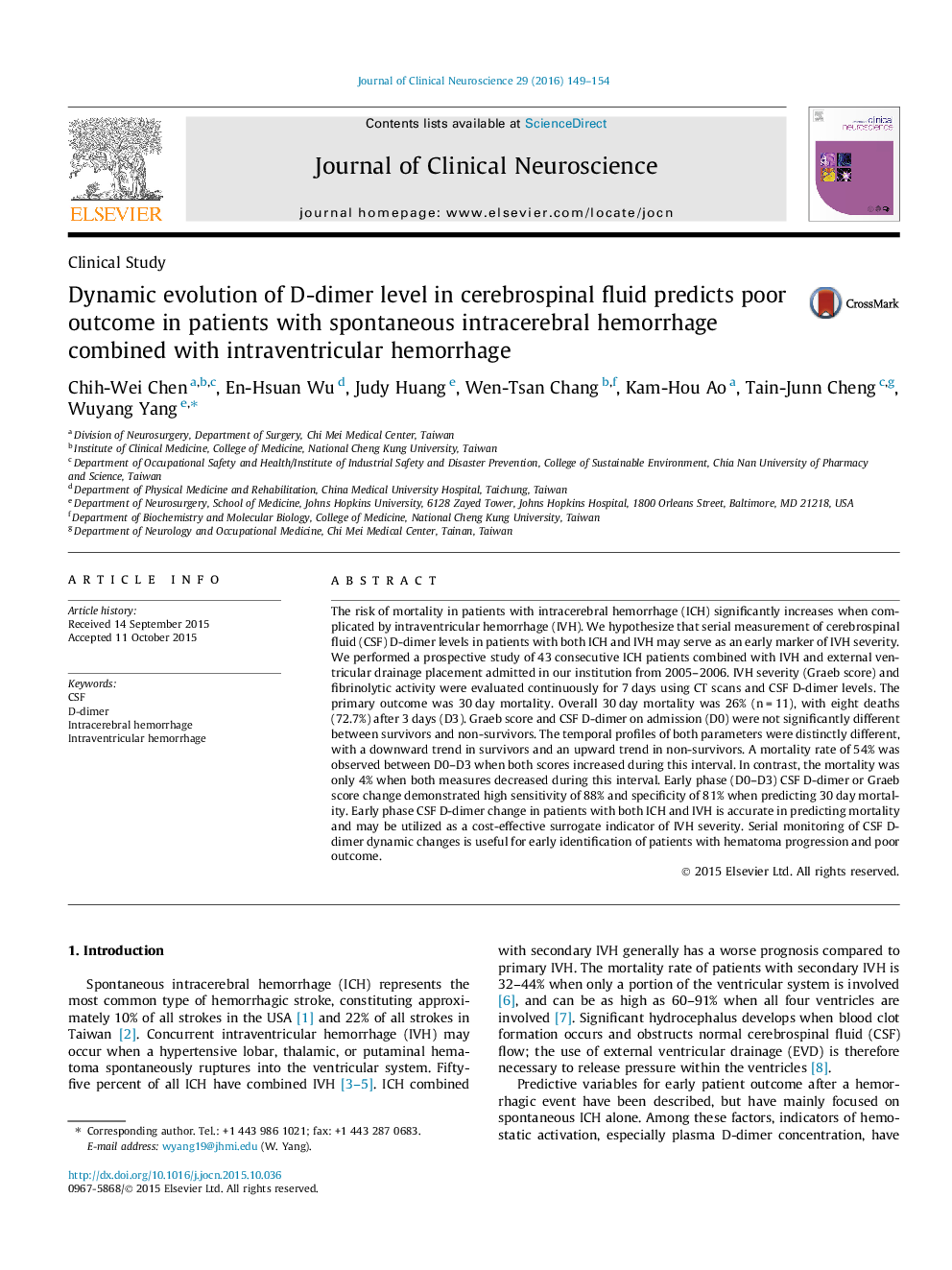| Article ID | Journal | Published Year | Pages | File Type |
|---|---|---|---|---|
| 3058427 | Journal of Clinical Neuroscience | 2016 | 6 Pages |
•Discovered strong correlation between cerebrospinal fluid D-dimer level and Graeb score.•Discovered continuous trend of cerebrospinal fluid D-dimer level predicts patient 30 day mortality.•Discovered early phase cerebrospinal fluid D-dimer level predicts patient 30 day mortality.•Concluded that cerebrospinal fluid F D-dimer level is a potential surrogate marker of intraventricular hemorrhage severity.
The risk of mortality in patients with intracerebral hemorrhage (ICH) significantly increases when complicated by intraventricular hemorrhage (IVH). We hypothesize that serial measurement of cerebrospinal fluid (CSF) D-dimer levels in patients with both ICH and IVH may serve as an early marker of IVH severity. We performed a prospective study of 43 consecutive ICH patients combined with IVH and external ventricular drainage placement admitted in our institution from 2005–2006. IVH severity (Graeb score) and fibrinolytic activity were evaluated continuously for 7 days using CT scans and CSF D-dimer levels. The primary outcome was 30 day mortality. Overall 30 day mortality was 26% (n = 11), with eight deaths (72.7%) after 3 days (D3). Graeb score and CSF D-dimer on admission (D0) were not significantly different between survivors and non-survivors. The temporal profiles of both parameters were distinctly different, with a downward trend in survivors and an upward trend in non-survivors. A mortality rate of 54% was observed between D0–D3 when both scores increased during this interval. In contrast, the mortality was only 4% when both measures decreased during this interval. Early phase (D0–D3) CSF D-dimer or Graeb score change demonstrated high sensitivity of 88% and specificity of 81% when predicting 30 day mortality. Early phase CSF D-dimer change in patients with both ICH and IVH is accurate in predicting mortality and may be utilized as a cost-effective surrogate indicator of IVH severity. Serial monitoring of CSF D-dimer dynamic changes is useful for early identification of patients with hematoma progression and poor outcome.
